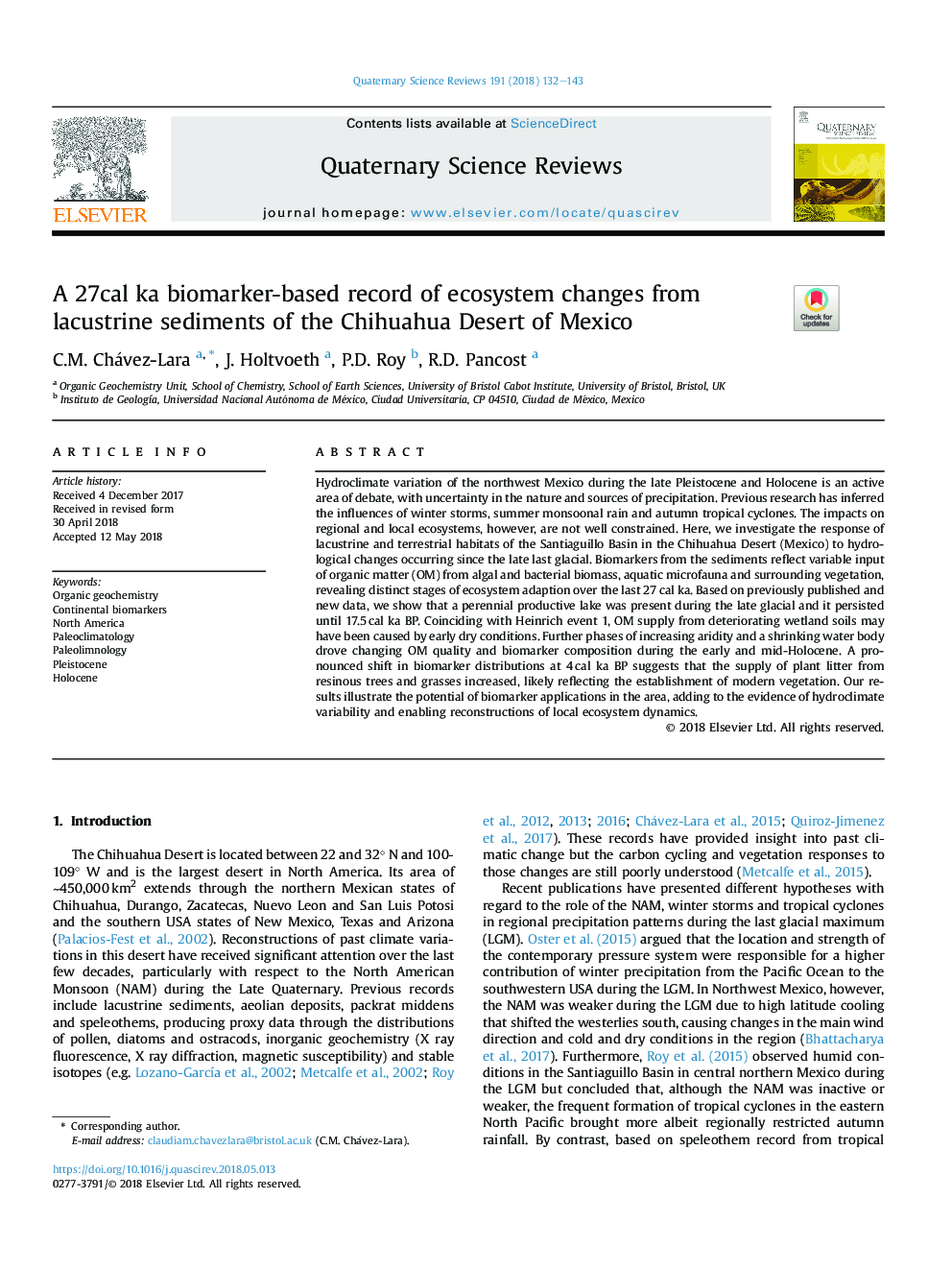| Article ID | Journal | Published Year | Pages | File Type |
|---|---|---|---|---|
| 8914753 | Quaternary Science Reviews | 2018 | 12 Pages |
Abstract
Hydroclimate variation of the northwest Mexico during the late Pleistocene and Holocene is an active area of debate, with uncertainty in the nature and sources of precipitation. Previous research has inferred the influences of winter storms, summer monsoonal rain and autumn tropical cyclones. The impacts on regional and local ecosystems, however, are not well constrained. Here, we investigate the response of lacustrine and terrestrial habitats of the Santiaguillo Basin in the Chihuahua Desert (Mexico) to hydrological changes occurring since the late last glacial. Biomarkers from the sediments reflect variable input of organic matter (OM) from algal and bacterial biomass, aquatic microfauna and surrounding vegetation, revealing distinct stages of ecosystem adaption over the last 27â¯cal ka. Based on previously published and new data, we show that a perennial productive lake was present during the late glacial and it persisted until 17.5â¯cal ka BP. Coinciding with Heinrich event 1, OM supply from deteriorating wetland soils may have been caused by early dry conditions. Further phases of increasing aridity and a shrinking water body drove changing OM quality and biomarker composition during the early and mid-Holocene. A pronounced shift in biomarker distributions at 4â¯cal ka BP suggests that the supply of plant litter from resinous trees and grasses increased, likely reflecting the establishment of modern vegetation. Our results illustrate the potential of biomarker applications in the area, adding to the evidence of hydroclimate variability and enabling reconstructions of local ecosystem dynamics.
Keywords
Related Topics
Physical Sciences and Engineering
Earth and Planetary Sciences
Geology
Authors
C.M. Chávez-Lara, J. Holtvoeth, P.D. Roy, R.D. Pancost,
